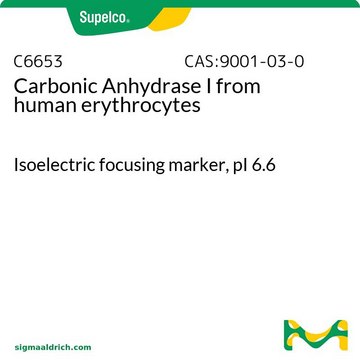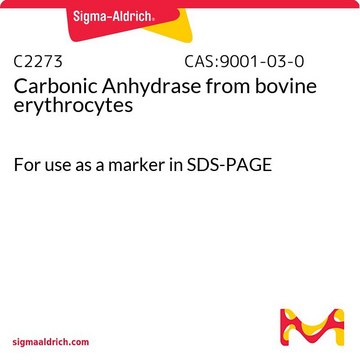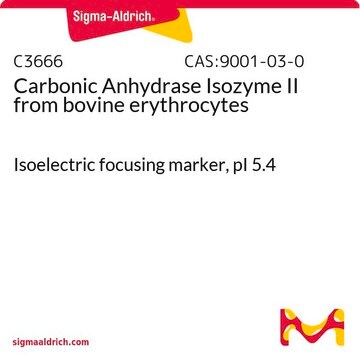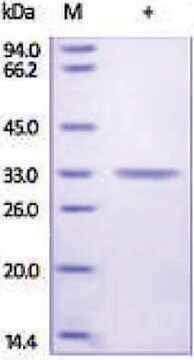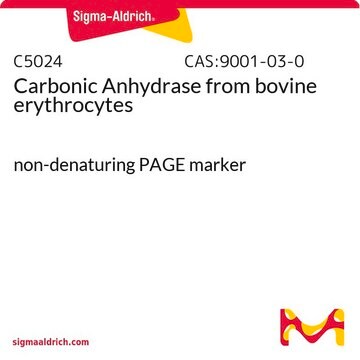C6624
Carbonic Anhydrase II human
recombinant, expressed in E. coli, buffered aqueous solution
Synonym(s):
CA-II, CA2, Carbonic Anhydrase 2
About This Item
Recommended Products
recombinant
expressed in E. coli
Quality Level
form
buffered aqueous solution
specific activity
≥5,000 units/mg protein
mol wt
large subunit 17-22 kDa
small subunit 10-12 kDa
concentration
800-1000 μg/mL
shipped in
wet ice
storage temp.
−20°C
Gene Information
human ... CA2(760)
Application
Biochem/physiol Actions
Unit Definition
Physical form
Storage Class Code
10 - Combustible liquids
Regulatory Listings
Regulatory Listings are mainly provided for chemical products. Only limited information can be provided here for non-chemical products. No entry means none of the components are listed. It is the user’s obligation to ensure the safe and legal use of the product.
JAN Code
C6624-BULK:
C6624-VAR:
C6624-500UG-PW:
C6624-500UG:
Certificates of Analysis (COA)
Search for Certificates of Analysis (COA) by entering the products Lot/Batch Number. Lot and Batch Numbers can be found on a product’s label following the words ‘Lot’ or ‘Batch’.
Already Own This Product?
Find documentation for the products that you have recently purchased in the Document Library.
Customers Also Viewed
Our team of scientists has experience in all areas of research including Life Science, Material Science, Chemical Synthesis, Chromatography, Analytical and many others.
Contact Technical Service


